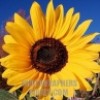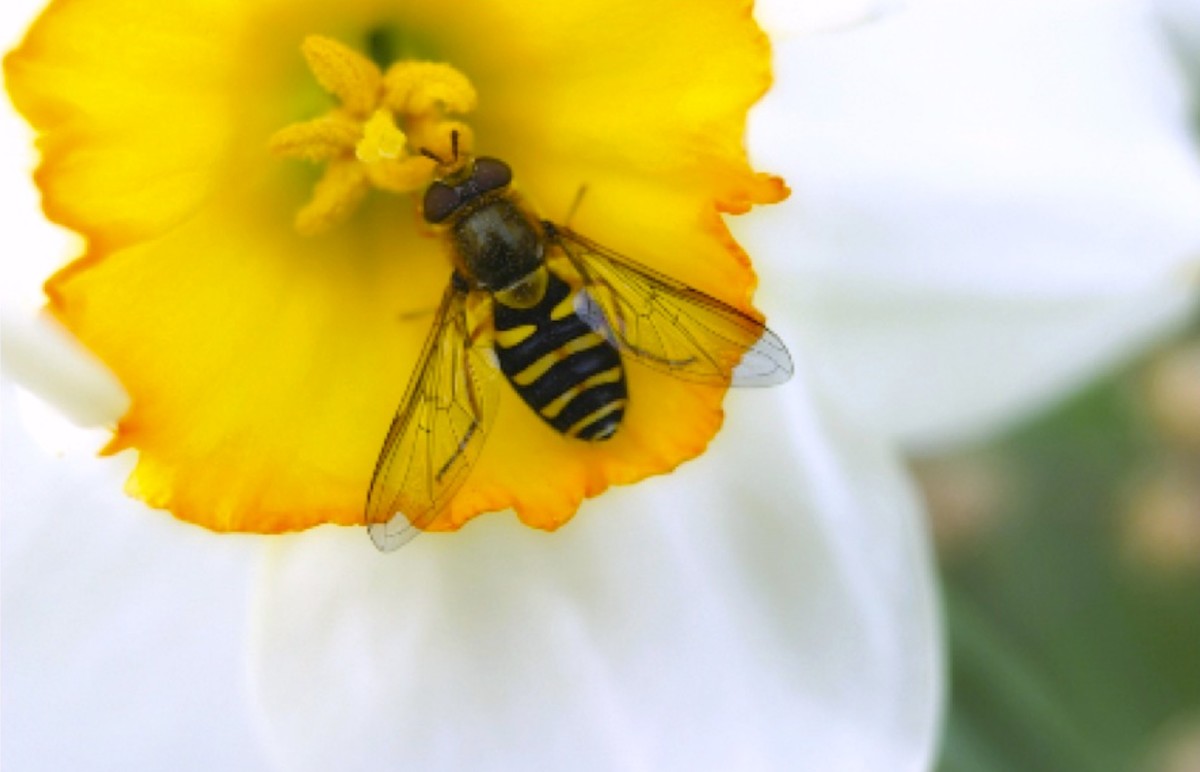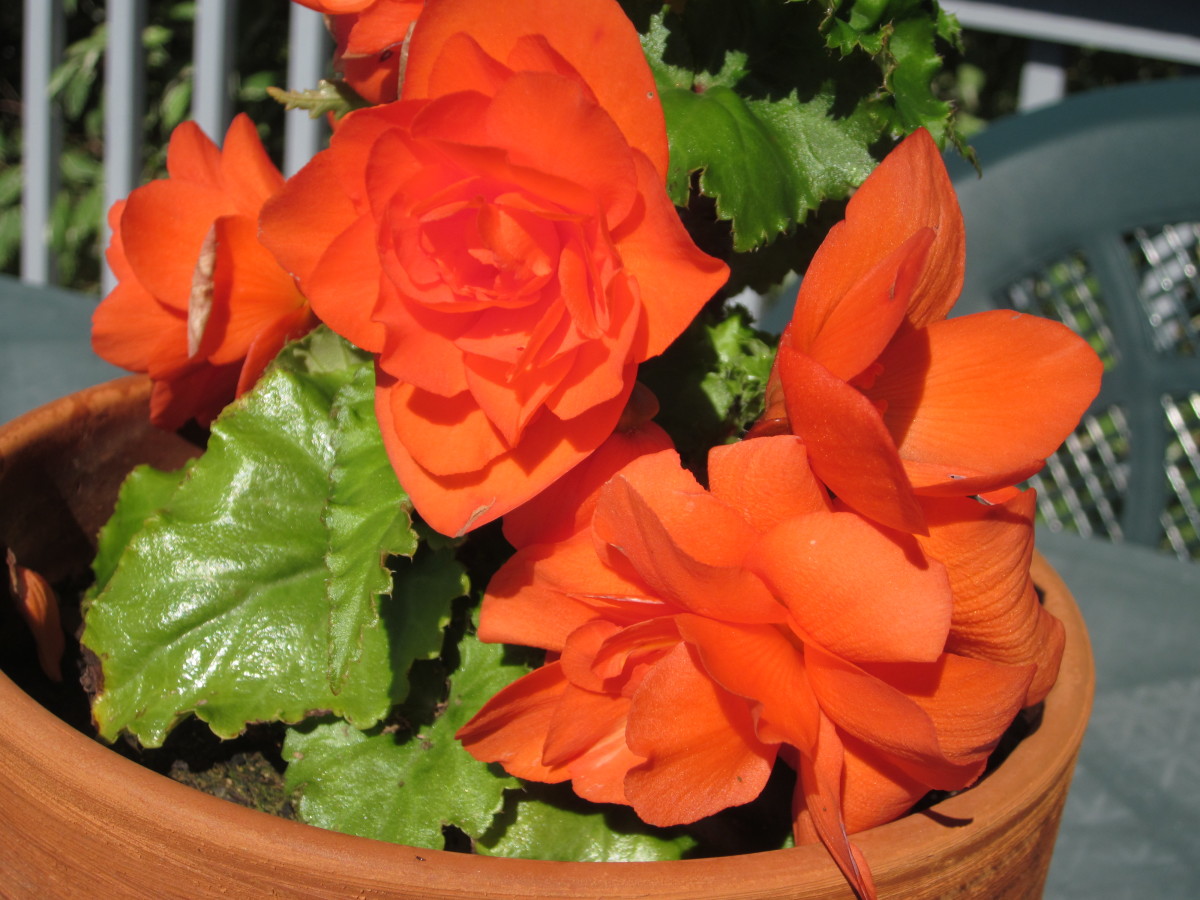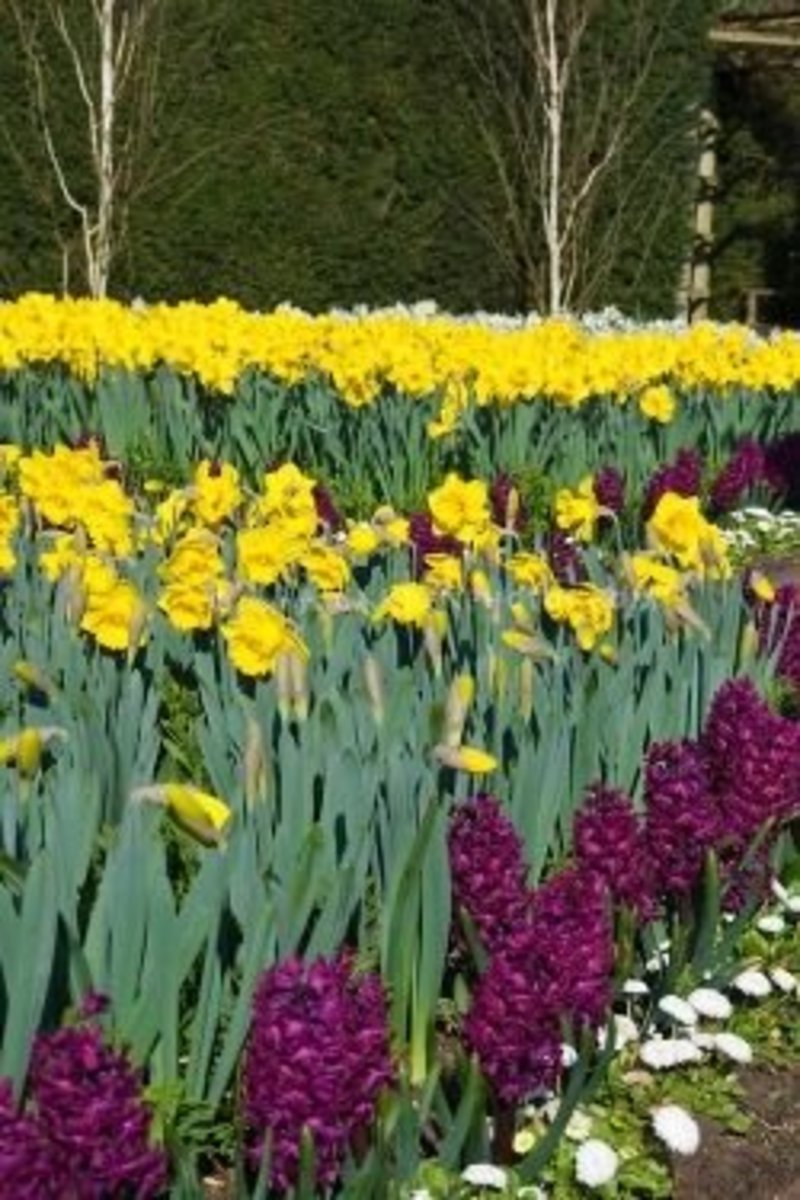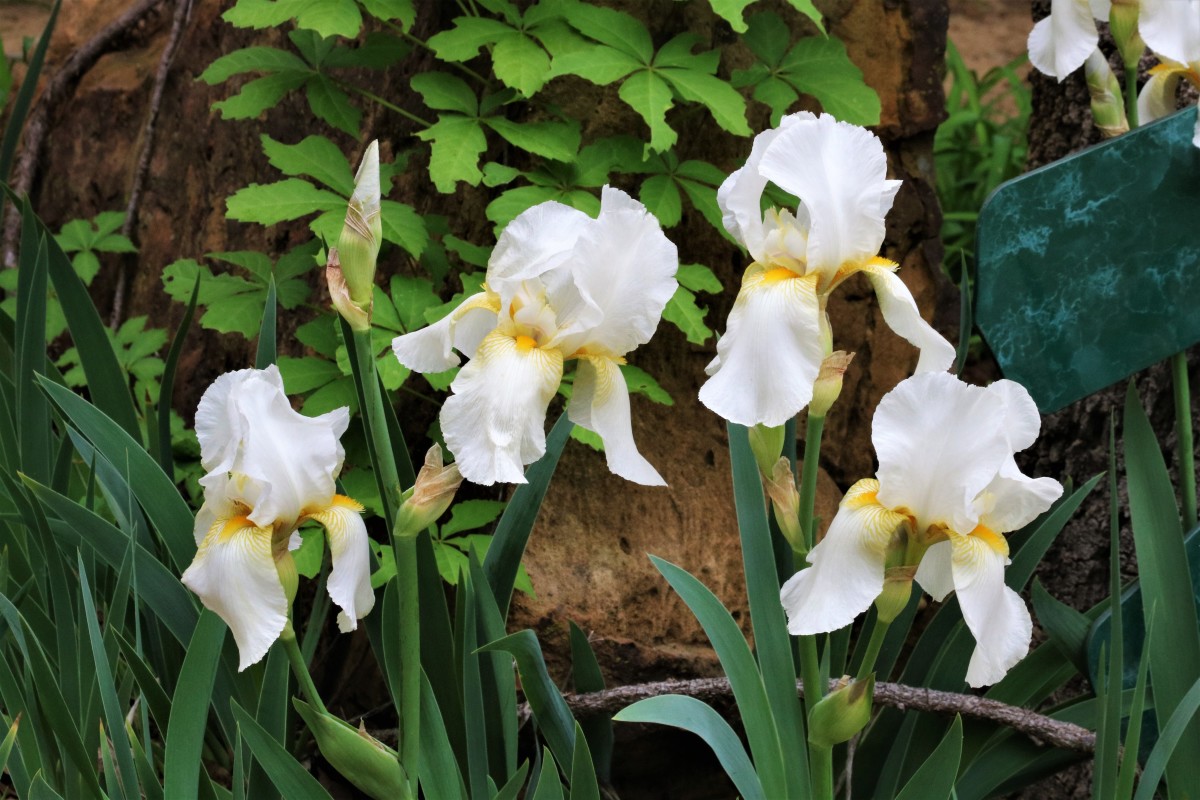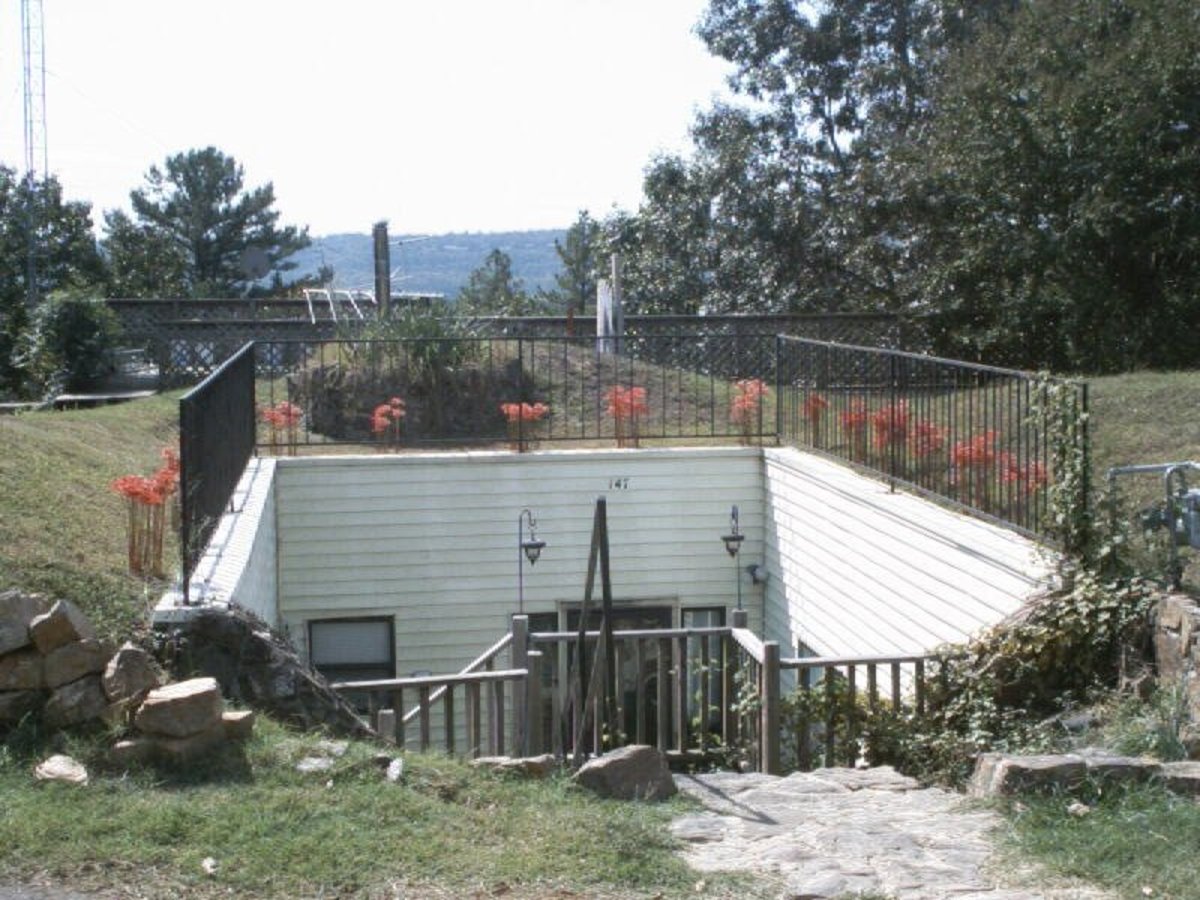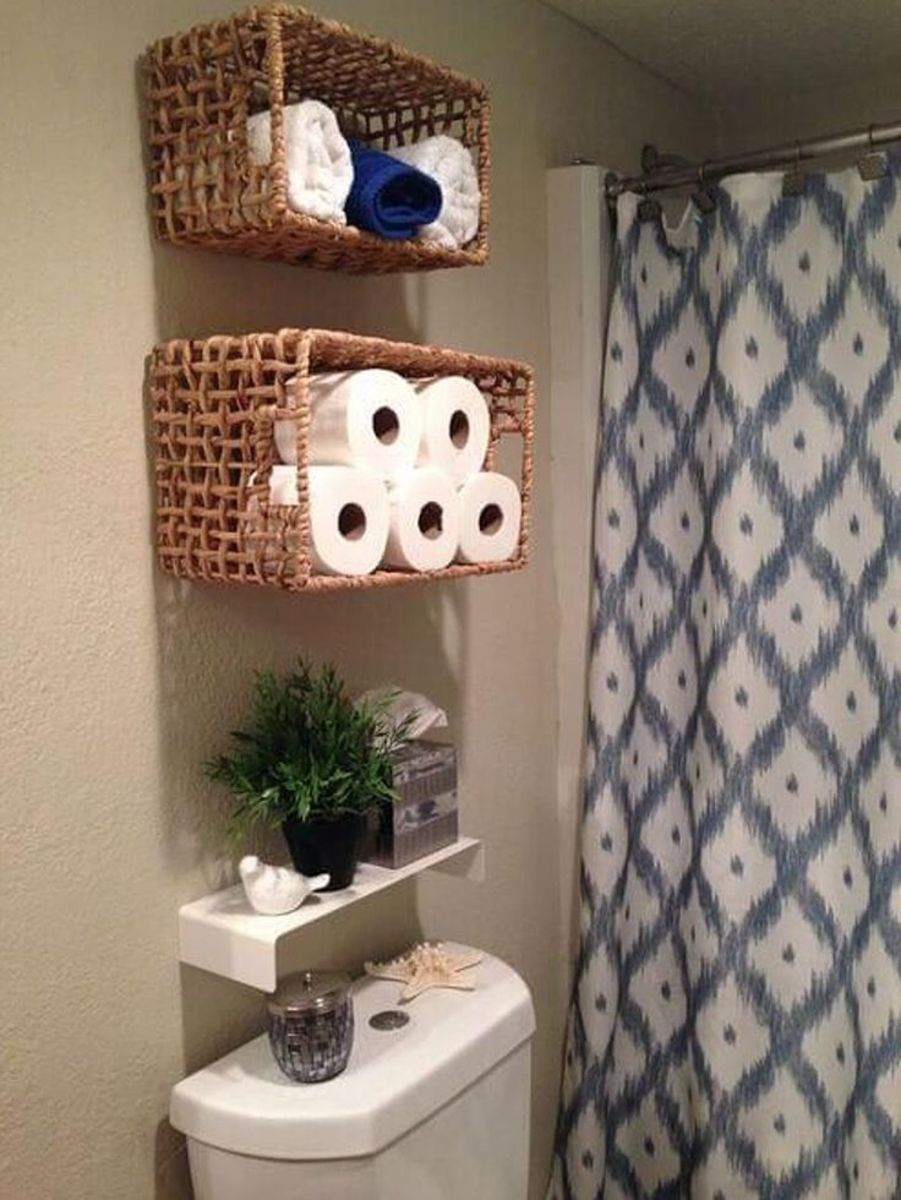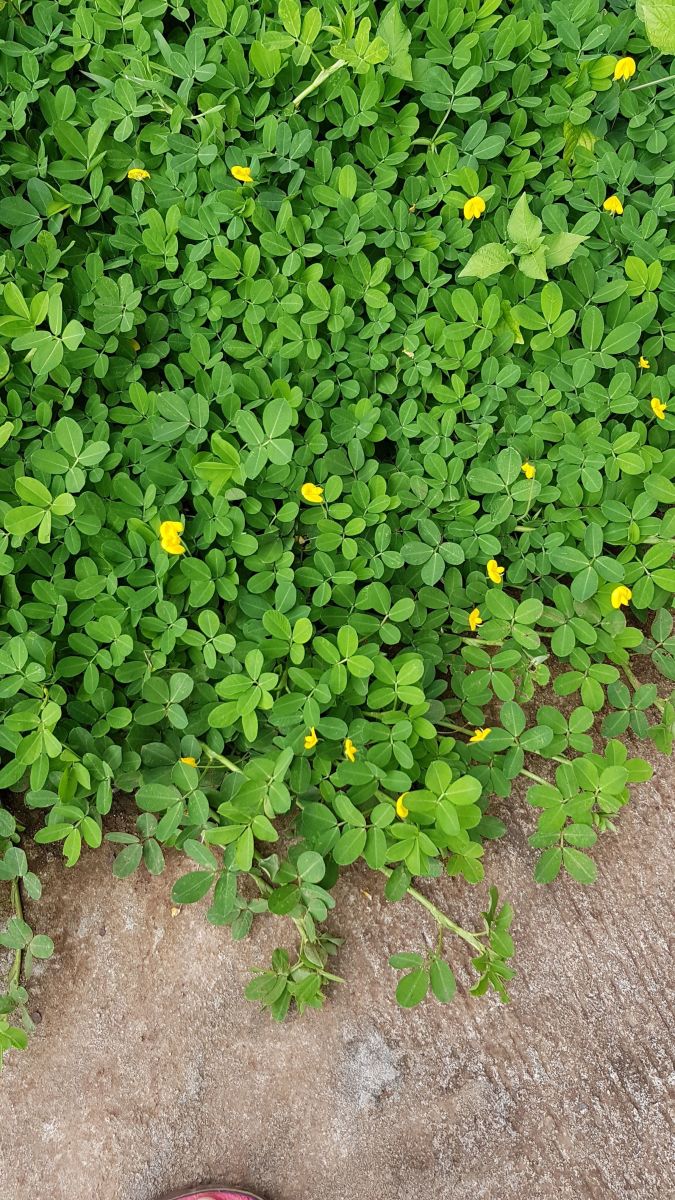How To Grow Flowering Garden Bulbs
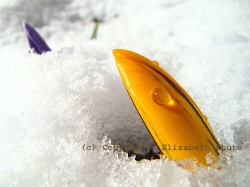
Flowering garden bulbs - a sure sign of spring
Winters on the Canadian prairies are long and intense. For months on end the landscape is a barren white, and the whistling wind seems to find its way into every little crack and crevice in your home. But finally the sun grows stronger. The winds don't howl so intensely and soon the snow begins to receed. That's when the fun begins.
As a child I used to eagerly watch the tiny strip of soil outside my grandmother's kitchen window. When would the winter snows be gone? Is that a point of green I see? Is it a crocus? Or maybe the daffodils? Personally, I loved the tiny little snowdrops the best.
Since that time, the sight of a flowering garden bulb poking its head toward the light has been a sure sign of Spring to me. Tulips, crocuses, hyacinths, daffodils, and irises - their lush and colorful flowers are the first to bring life back to a barren winter landscape. And then there are the summer-flowering bulbs such as dahlias, begonias and anemones. What incredible variety, texture, and colors they bring to the garden. From earliest spring until late into the fall, flowering garden bulbs can be depended upon to keep your garden vibrant. And to think that they slept underneath all that snow and ice during the long winter months.
I hope you will enjoy this how-to guide for the beginning gardener. It will cover everything from choosing a good bulb to specific planting directions and exotic bulbs. May it bring a blaze of color to your home.
Types of Garden Bulbs
Bulbs generally fall into two groups: spring-flowering and summer-flowering . A more accurate grouping, however, divides bulbs into hardy and tender varieties.
As a rule, spring-flowering bulbs are hardy bulbs. These bulbs are planted in the fall, generally before the first frost. They require a sustained "dormant" period of cold temperatures to stimulate root development.
Many hardy bulbs, such as daffodils, perennialize well and can be left in the ground to flower year after year.
Then there are the summer-flowering bulbs. These are called tender bulbs as they cannot survive harsh winter conditions and must be planted in spring after the last frost of the season. To enjoy these bulbs year after year, they must be dug up in fall and stored indoors over the winter. A notable exception is the lily. Many summer-flowering lily varieties are quite hardy and can be planted in either fall or spring.
The Difference Between Bulbs, Corms, Tubers, and Roots
Technically speaking, many popular "bulb" flowers are not produced from true bulbs at all. Crocuses and gladioli, for example, are really corms, while such favorites as dahlias and begonias are tubers.
The differences between bulbs and corms are slight; at first glance the two look very similar. The main distinguishing trait is the method of storing food. A bulb is composed of fleshy scales, like an onion, which protect a bud at the base. A corm, however, has the bud at the top and is a solid mass of starchy material that tends to be much flatter in shape (sort of like someone squashed it down).
Tubers and roots are easily distinguished from bulbs and corms. They have no protective covering and are really just enlarged stems. They come in a variety of shapes, from cylindrical, to flat, to just about any combination you can imagine. Many come in clusters.
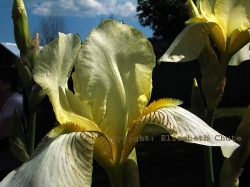
Exotic Flower Bulb Choices
In addition to tulips and daffodils, you might also like to consider planting some exotic Dutch bulbs such as spring-flowering scilla, puschkinia, muscari, fritillaria, allium, camassia, and eremurus. Your local climate will affect which bulbs you choose to plant, as all bulbs have the same cold requirements.
Spring-flowering bulbs offer a wide variety of colors, heights and flowering periods. So let your imagination run wild. Experiment with garden design and leave the rest to these easy-to-grow bulbs.
All you really need to learn about planning your garden is written on the package, or available from your bulb supplier. The basics that you will need to know are:
1. the color of the flower
2. what months it will bloom
3. how high it will grow
4. what months to plant, and
5. how deep to plant
By cutting out pictures from mail-order catalogues or booklets picked up at your local garden center, you can plan your dream garden on paper right in your own living room!
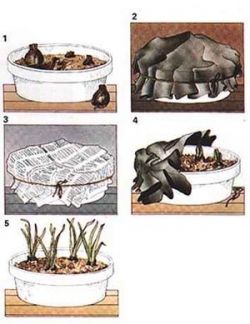
How To Force Spring Bulbs
1. Prepare bulbs early.
2. Wrap the bowl in plastic sheeting and bury in an outdoor plunge.
3. Or wrap in newspaper and keep as cool as possible indoors.
4. Uncover when one-inch sprouts show, and keep in a light but cool place until buds are well formed.
5. Transfer to a warm room to flower.
When to Plant Garden Bulbs
In order to enjoy the glorious bulb flowers that bloom in spring -- such as tulips, daffodils, hyacinths, crocus and others -- you must plant them in the fall because they require a sustained "dormant" period of cold temperatures to stimulate root development.
As a rule, the colder your climate, the earlier you plant. In colder northern climates, for example, plant in September or October (or in my case, near the end of August!) In warmer climates you may need to plant bulbs in December (or even later). The only universal rule is that, spring-flowering bulbs must be planted before the first hard frost.
It's best to plant bulbs as soon as possible after bringing them home. If you must store them, keep them dry and cool -- between 50 and 60 degrees (F). For long storage periods, a refrigerator vegetable compartment can be used, but be sure to keep them away from ripening fruit. The gas emitted by fruit's ripening process can destroy bulbs. Remember, any condition causing the bulbs to shrivel will injure them.
If storing in a cold cellar, please keep in mind that squirrels, rats and mice absolutely love to dine on bulbs.
~~~~~~~~~~~~~~~~~~~~~~~~~~~~
When planning a garden, consider your local climate and the established "hardiness rating" of various plants you have in mind. Some plants cannot handle severe winters; others wither in heat; still others, such as the spring-flowering bulbs, need a cold period to stimulate growth cycles. Look at plant labels, bulb packaging, catalogues and reference books for the hardiness ratings of individual plants.
Basically, just remember to plant spring-flowering bulbs in your area 6 weeks before the ground freezes.

Soil Conditions & Planting Directions for Flowering Bulbs
Bulbs normally like a good, well-drained loam. If the soil in which they are going to be grown is not good, add well-rotted manure, well-rotted compost, peat moss, or other organic material. Never add fresh manure when preparing soil for bulbs.
If the soil is very heavy, add compost or peat moss as well as coarse sand.
- Plant the bulbs, with the exception of the shade lovers, where they will get all the sun possible and where they will be sheltered from sweeping winds.
- Where bulbs are to be planted in the grass, or where hundreds of bulbs are to be planted, used a tool known as a "bulb planter". Otherwise make the holes with a trowel, but flatten them at the bottom so the bulb sits on the soil and not on an air pocket. (Note that a cluster of flowers is more striking to the eye than a lone bloomer.)
- To determine how deep to plant, consider the caliber or size of the bulb. Large bulbs (2 inches or more) are usually planted about 8 inches deep; smaller-size bulbs (1 inch) are planted 5 inches deep.
- Loosen the soil with a rake to aerate it and remove any weeds and small stones. Mix in a bit of peat moss to improve soil drainage. Place -- do not push -- bulbs firmly in the soil with the pointed side up. Space large bulbs 3-10 inches apart and small bulbs 1-2 inches apart. (If you're not sure which end is right-side-up, don't worry. Upside-down bulbs usually come up anyway!)
- Cover the bulbs with soil and water generously. Add 2-3 inches of mulch, pine bark is fine, on top of the garden bed. This will provide added protection from the cold and keeps the soil from drying out.
- As a rule, bulbs require ample water during the season when their foliage is green and growing actively, and much drier conditions during their period of summer dormancy. Great care should be taken not to remove any foliage until it has died down naturally.
- When cutting flowers, leave as much foliage as possible: the leaves are the food-manufacturing organs, and it is their function to prepare food enough to be transported to and stored in the bulbs to insure sturdy growth and flower production the following year.
Most bulbs will increase in number if their conditions of cultivation are satisfactory. After 3 - 5 years, lift and divide the clumps, or else there will be few flowers. Do this as soon as the leaves have died down, or better still, after the leaves have turned half yellow, as it is then easier to see where the bulbs are.
By following these simple guidelines, your colorful garden is sure to turn the neighbors green with envy. Basically it all boils down to: Buy those bulbs, put them in the ground and dream all winter of the glorious spring that awaits you.
Professional Bulb Planting Tips
- Plant low-growing bulbs, such as grape hyacinths, in front taller flowers, such as tulips.
- Always plant bulbs in groups, either in small clusters or large beds, a single flower standing alone is not very dramatic.
- Plant scattered clusters of early-flowering bulbs, such as crocus, throughout your lawn to achieve a "natural" look.
- Plant clusters of daffodils around the woodpile, or in a meadow area that is not mowed often. These will add a colorful accent to your landscape in spring and, if left on their own to wilt away, will return year after year. Well-selected and mature plantings of naturalized bulbs can add value to your home, just as mature trees and shrubs do.
- Experiment. You know better than the experts what flowers you fancy. Pick a flower bulb variety on a whim and try a small planting. If it does well for you, add more next year.
